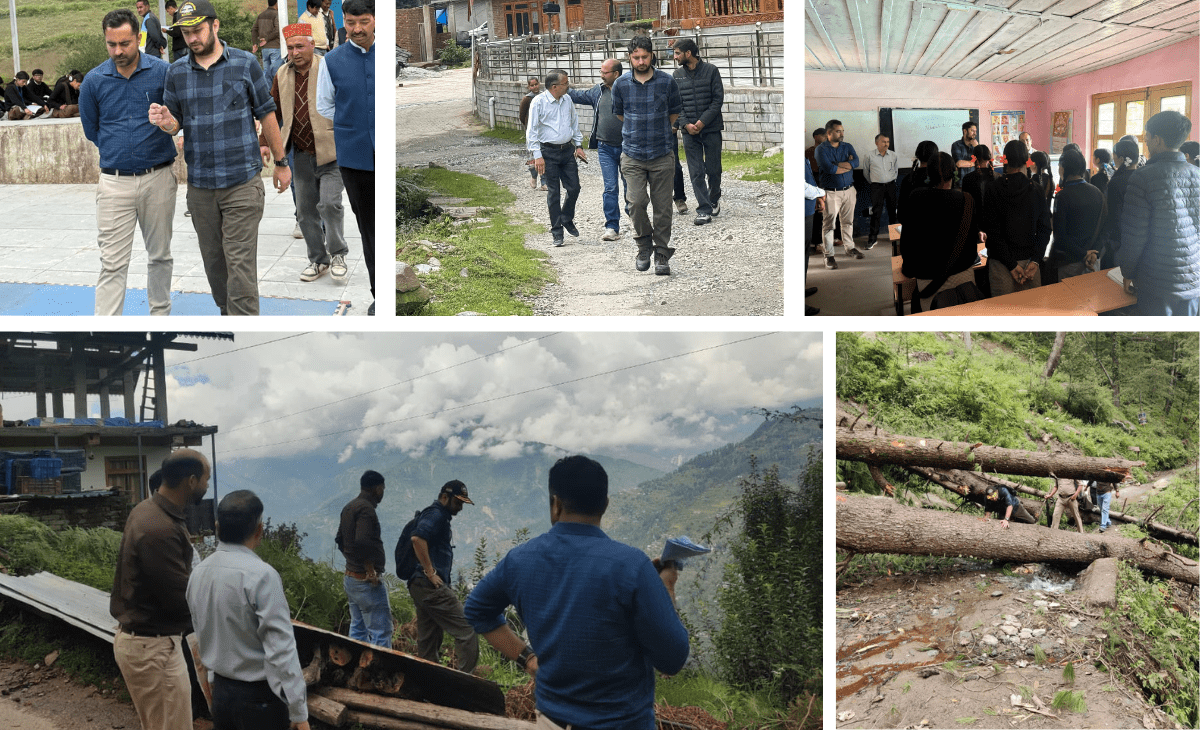Mandi DC’s swift response draws praise amid contrasting rehabilitation work in adjoining Kullu
Munish Sood
Mandi
In the aftermath of Himachal Pradesh’s devastating floods and landslides, a stark contrast has emerged between the relief and rehabilitation measures in Bali Chowki, Mandi district, and those in Banjar, the adjoining subdivision of Kullu. While Bali Chowki has witnessed rapid and organized relief operations, residents of Banjar complain of slow, inadequate, and poorly coordinated government response.
The difference, many locals say, lies in the leadership and ground-level coordination by district authorities. In Mandi, Deputy Commissioner Apoorv Devgan has been at the forefront, personally monitoring evacuation drives, ensuring timely distribution of rations, and mobilizing state agencies to restore essential services. In contrast, Banjar’s recovery appears stalled, with villagers still waiting for consistent supplies and safe road connectivity.
Bali Chowki: Quick Action, Tangible Results
Bali Chowki, one of the worst-hit pockets of Mandi, suffered severe landslides and massive damage to homes, shops, and public infrastructure. Yet within days, relief camps were operational, damaged stretches of road were cleared for essential movement, and medical assistance was dispatched.
Survivors from villages around Bali Chowki reported that ration kits, tents, blankets, and medicines reached them in time, reducing the risk of hunger and disease outbreaks. Revenue officials, local volunteers, and NDRF personnel worked in sync to ensure no family was left unattended.
DC Mandi: “Our Team Has Been on Duty 24/7”
When contacted, DC Mandi Apoorv Devgan said his team had been working round the clock to ensure swift rehabilitation.
“Our officers and staff have been on duty 24/7 since the disaster struck. Power supply, mobile networks, and road connectivity have all been restored, and essential commodities were delivered directly to people at their doorsteps. I personally travelled to the remotest part of the district — Gada Gussaini — to make sure that help reached even the last household in need,” he said.
Locals credit this proactive approach for the relatively faster return to normalcy in Bali Chowki.
Banjar: Struggling to Find Its Footing
Barely a few kilometers across the border in Kullu district, the story is alarmingly different. Banjar valley, equally battered by landslides and flash floods, has witnessed broken communication lines and delayed relief distribution.
Residents complain that even after weeks, food packets and tents have been irregular, and medical aid often reached late. The restoration of National Highway 305 — Banjar’s lifeline — remains sluggish, worsening the isolation of dozens of villages.
“The disaster here is unimaginable, but the pace of help has been painfully slow,” said one Banjar villager. “We see how Bali Chowki has recovered and can’t help but ask why Banjar has been left behind.”
Leadership Makes the Difference
The comparison between the two adjoining subdivisions highlights how strong administrative leadership can alter the course of disaster management. In Bali Chowki, DC Mandi’s insistence on on-ground presence, transparent reporting, and rapid mobilization of resources has made relief visible and effective.
On the other hand, the apparent lack of urgency and weak coordination in Banjar has led to growing frustration among survivors. With winter fast approaching in the high-altitude valley, delays in rehabilitation could worsen the humanitarian crisis.
The Road Ahead
The Himachal government now faces growing pressure to replicate Bali Chowki’s relief model in Banjar and other lagging regions. Locals argue that prompt action, accountability, and better inter-departmental coordination can bridge the gap.
For now, while Bali Chowki stands as an example of responsive governance, Banjar remains a grim reminder of what happens when relief fails to keep pace with disaster.





